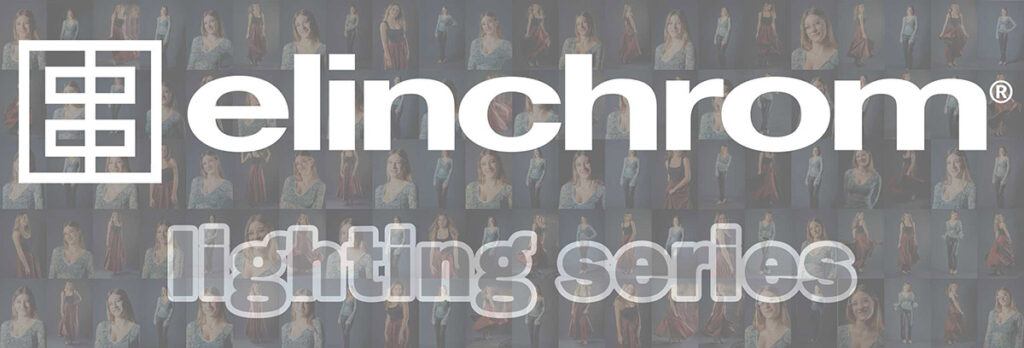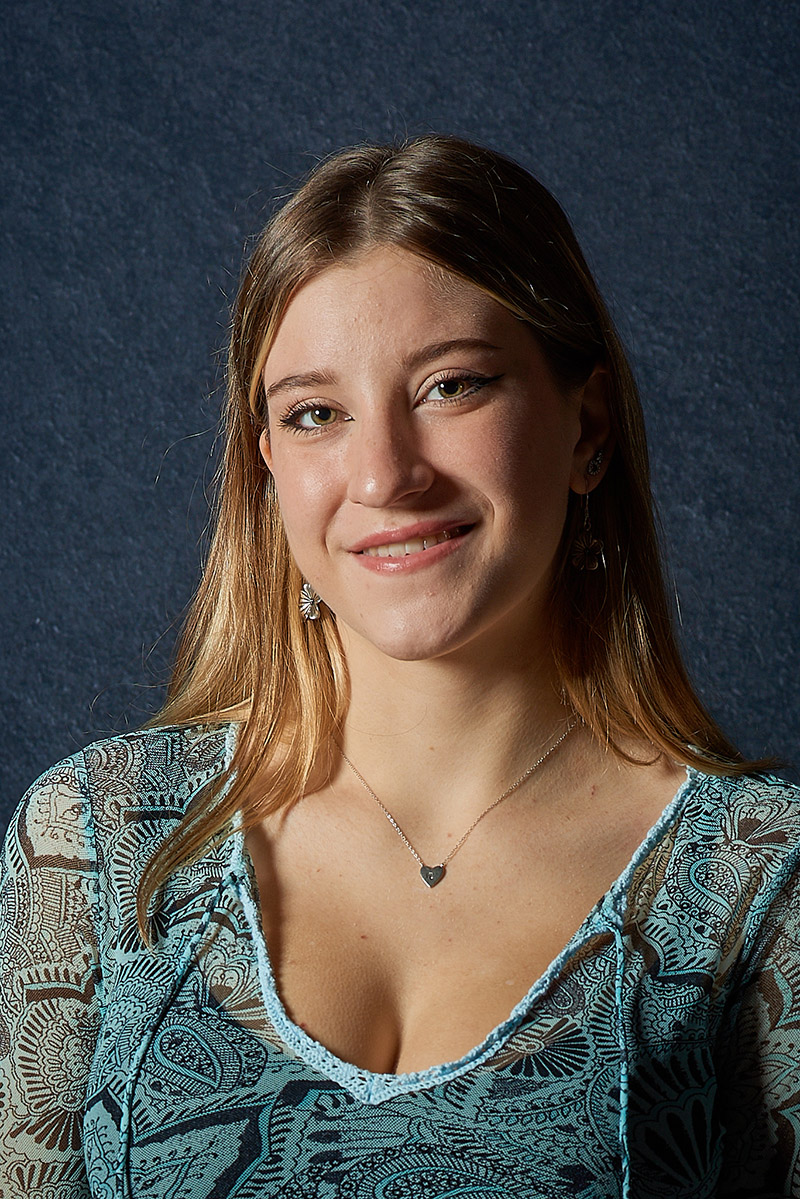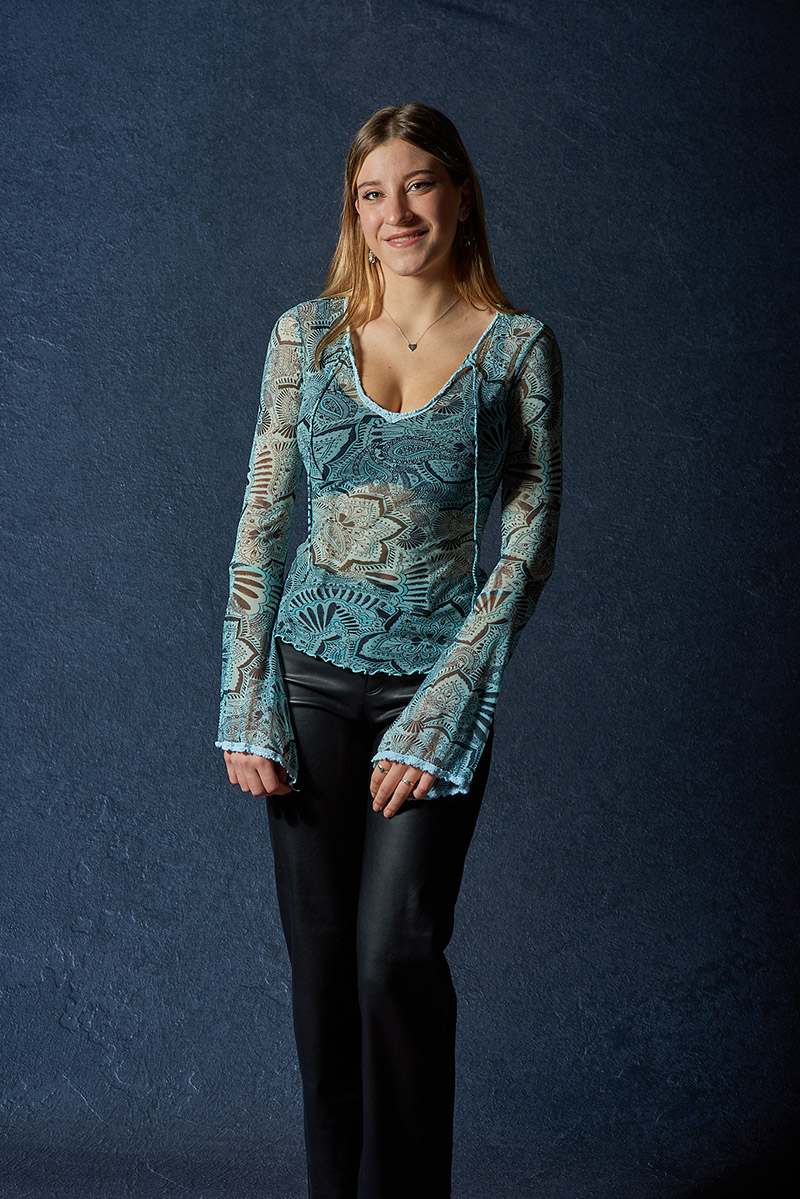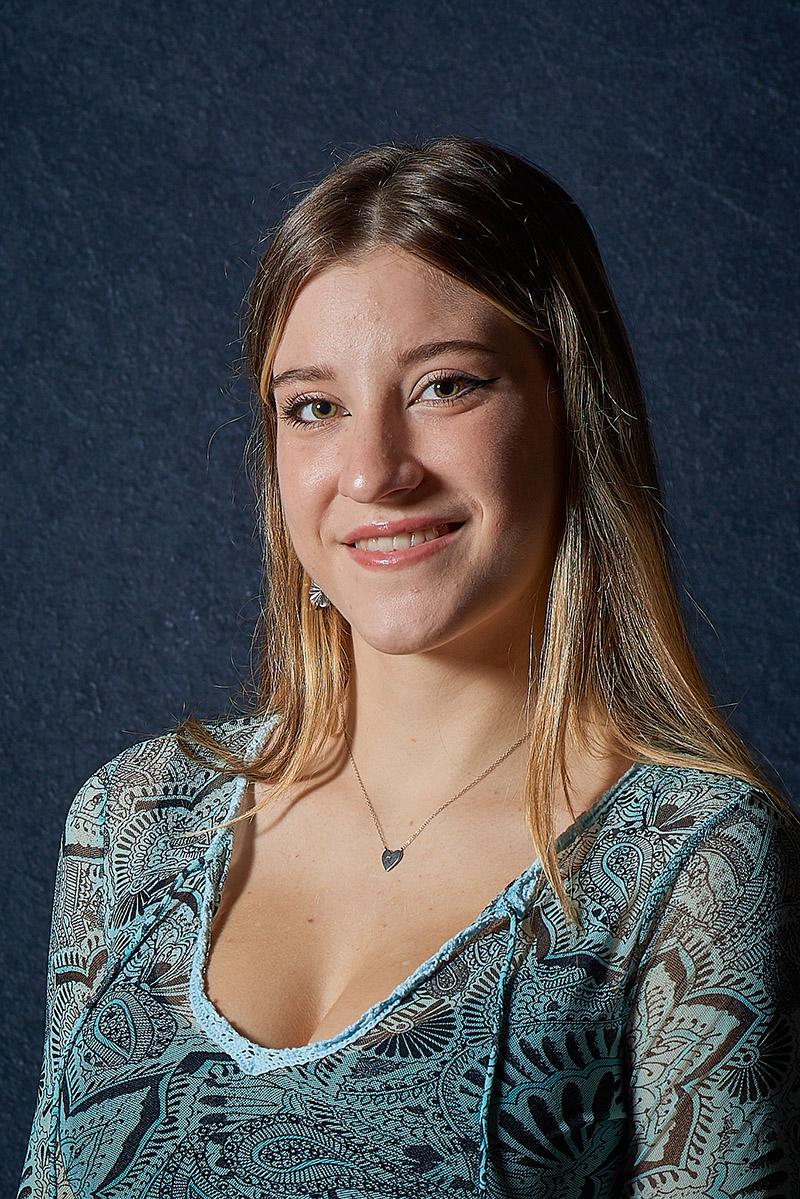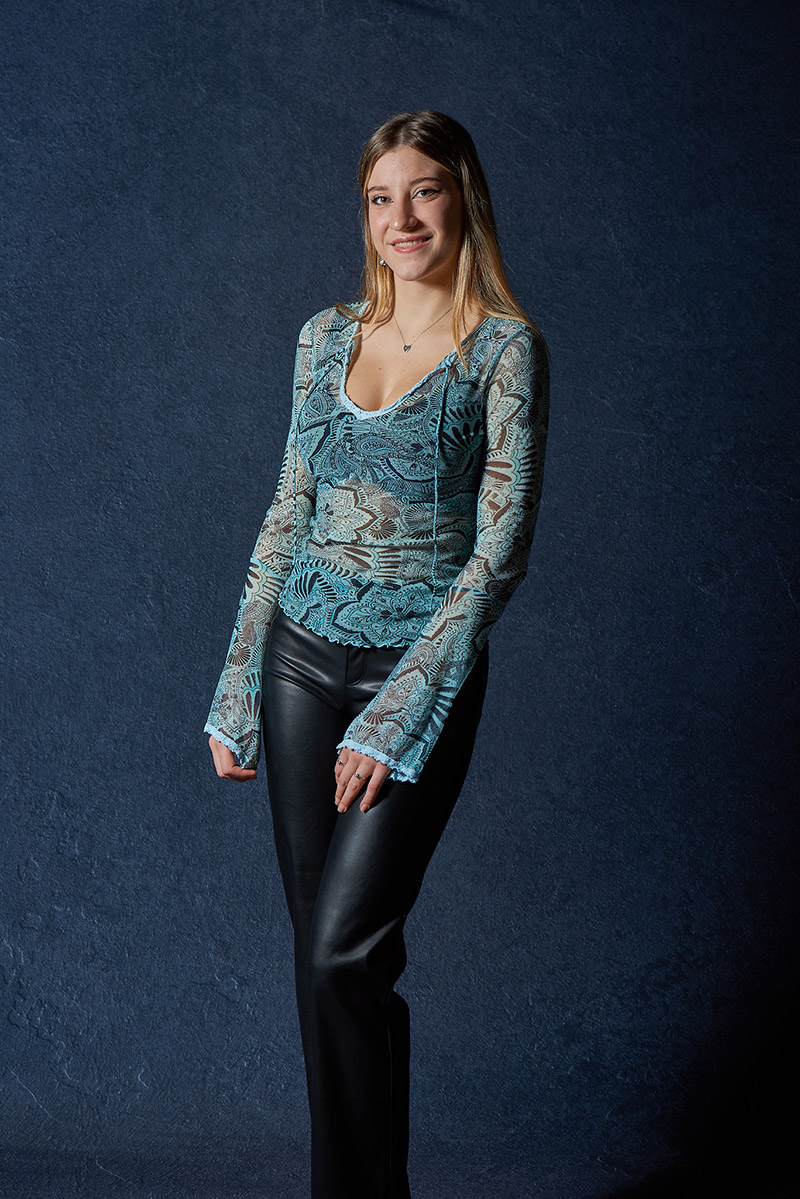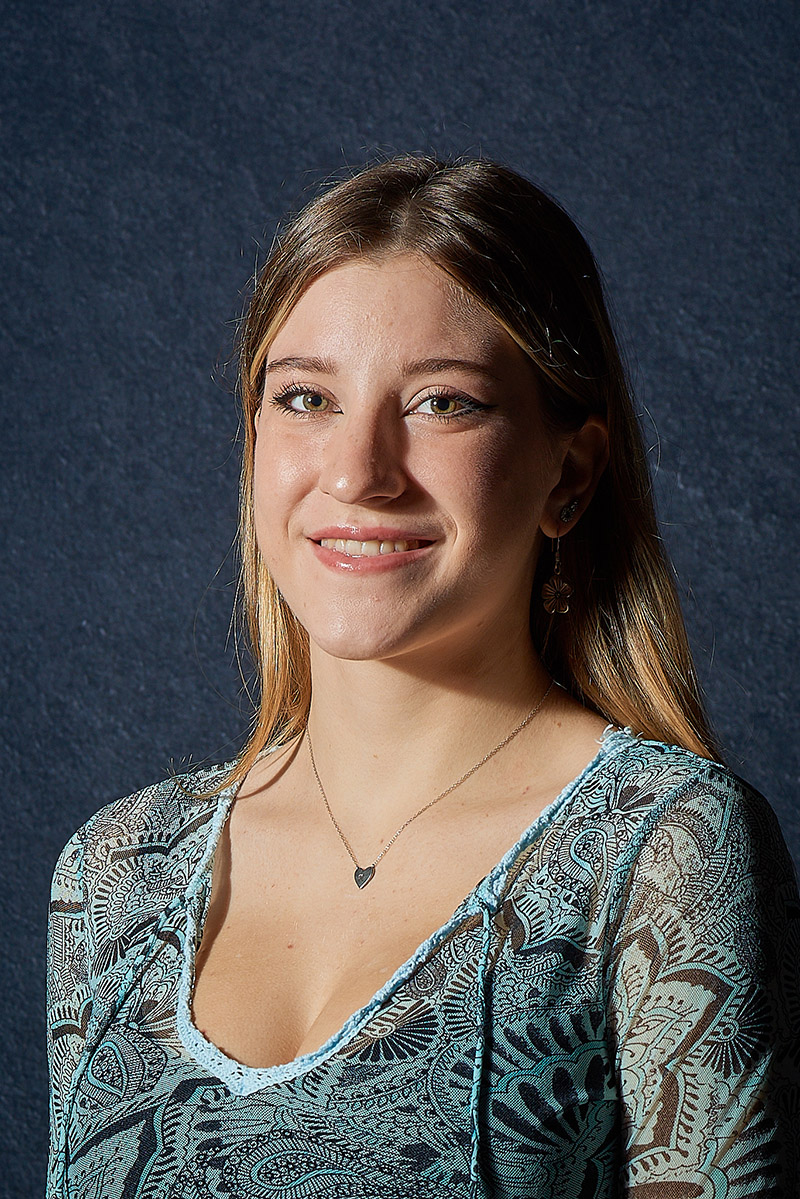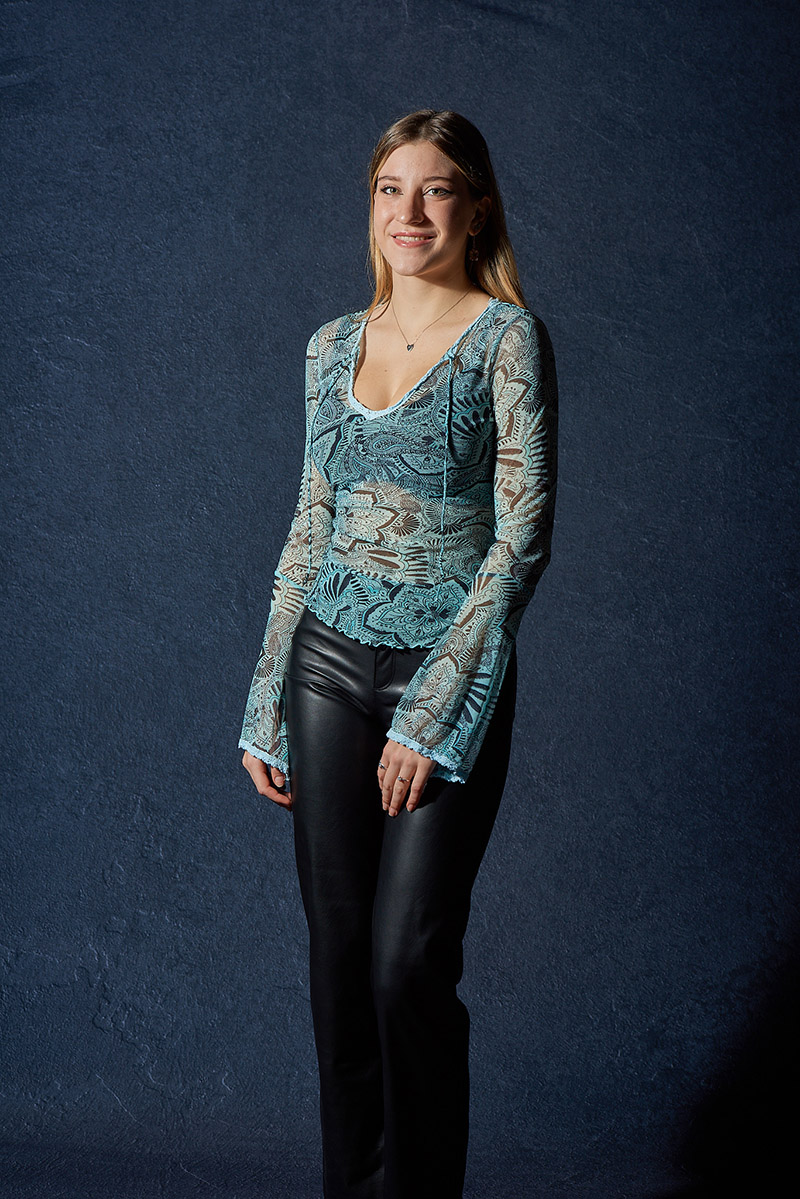Welcome to the fifth installment of our new monthly that highlights a different Elinchrom Light Shaper or Lighting Technique, with sample images (full length and cropped headshots) and lighting diagrams. All the images were photographed with the same model and outfit (standing in the same spot on the background – about 3 feet away), the same day in the same blacked out studio, with the same strobes at the same height (forehead height) & distance (about 5 feet) from the model and the same camera setup. I tried to remove as many obstacles as possible so we can compare light shaper effects.
I used an Elinchrom FIVE battery monolight triggered by the Elinchrom Transmitter Pro. My trusty Gossen Digisky light meter ensured consistent exposure values – it has an integrated Skyport transceiver to remotely trigger the FIVE. My Nikon D810 had a Tamron 85mm f/1.8 lens and all was mounted on a Vanguard VEO 3+ 263CB tripod. Camera settings are ISO64, f/8, 1/125s We used an Easiframe backdrop system with the Grey Texture backdrop. I tethered my camera into Capture One on my laptop with a Tether Pro USB-C to C cable and connected my laptop to a large screen TV with a TetherPro HDMI cable so we could review images on the big screen.
Special thanks to Phil and RevPrint Studio (https://www.revprint.com) for the use of their space. Phil hosts workshops featuring Elinchrom gear via West Toronto Photography Group (https://www.wtpg.ngo/)
I’ll start with light shapers and techniques for portraiture. This month, our focus is on the Elinchrom 85cm/33in Shallow White/Translucent umbrella, which comes with a removable Silver cover. This umbrella can be used as a Shoot Through umbrella without the cover, a White Bounce umbrella or Silver Bounce umbrella with the cover in place. If you’re going to use one umbrella, this one is the most useful.
Umbrellas are largely maligned by many professional photographers. I think this is a mistake – every light shaper has a place when you know how to use it. This article shows the light qualities and further articles will show the practical and preferred ways to use these umbrellas.
Let’s start with the base characteristics of lighting with an umbrella. Umbrellas spread light everywhere – they are a shotgun approach to lighting as they’re very difficult to target specific parts of your subject. Shadow transitions are generally very soft, although using a Shoot Through umbrella is noticeably harder light than a Bounce umbrella. Also, as noted with the White Deflector Plate in the Beauty Dish and the White Beauty Dish, a Shoot Thru umbrella is warmer.
If we flip the strobe and umbrella around to use it as a Bounce umbrella with the White fabric only, it’s a touch less warm. Most importantly, we can see that specular highlights are lost – highlights become more pronounced throughout the image and much larger. The light covers more of the image and reduces contrast and shadows as light from umbrellas wraps around your subject more.
Adding the Silver cover to the umbrella increases contrast and brings more of those specular highlights back to the image. Highlights are a touch more defined and we have a nice balance of contrast. One important note on this umbrella – you are still using the White diffuser with the Silver cover so the light characteristics are not the same as using a pure Silver umbrella. Pure Silver will be cooler and punchier.
When would you use which umbrella? Generally, I only use umbrellas for fill lights or when photographing groups. The Shoot Through is a nice option to warm an image slightly. If I’m using a White Beauty Dish as a key light, I would use the White Shoot Through or White bounce umbrella for fill. If my key light is cooler, such as the Silver Beauty Dish or Deep Octa, I would opt for the Silver bounce umbrella so the colour of my fill more closely matches my key light.
Share some of your favourite images taken with an umbrella on our Facebook page or tag us on Instagram.
Next month, I’ll show the effects of the Elinchrom 7” Standard Reflector with and without grids. At the end of the series, we’ll compare each of the Elinchrom light shapers to each other. See you next month!
Read the previous articles:
Elinchrom Light Shapers and Lighting Techniques – #Episode 1
Elinchrom Light Shapers and Lighting Techniques – #Episode 2
Elinchrom Light Shapers and Lighting Techniques – #Episode 3
Elinchrom Light Shapers and Lighting Techniques – #Episode 4
Items Discussed
Author: Will Prentice
A portrait, fine art and commercial photographer for 30 plus years, Will Prentice is not just a contributor to PHOTONews magazine, but also host of PHOTONewsTV, owner of Captura Photography+Imaging and Technical Support/Brand Manager for Amplis Foto, Canada’s largest distributor of photographic equipment.
Will teaches photographers of all skill levels how to improve their craft – from creative photo projects to picking the right gear for their needs to flattering lighting to getting the best expressions to creating final images for screen and print. His unique style of highly detailed images with perfect tonality, wide dynamic range and stunning colour is instantly recognizable. Commercial clients rely on Will’s creative eye and mastery of lighting.
When he’s not behind the camera or in front of a class, you’ll find Will outdoors in any weather – usually on one of his bikes or enjoying time with his grandchildren.



